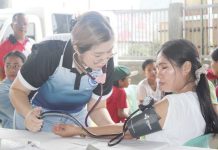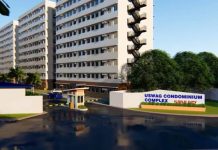
THE USUAL police version of a fatal buy-bust goes like this: a police operative pretends to be a user and contacts a pusher for a drug buy. They transact, and when the sale happens the poseur-buyer makes some gesture that will alert other operatives in the vicinity.
The police move in for the arrest. The pusher, now sensing that he is transacting with cops, pulls a gun and fires away to extricate himself from the situation.
The police are left with no choice but to fire back. The pusher is hit and succumbs almost instantly to the wounds that he sustained. The police then find one or two sachets of shabu in his possession. They also gather the caliber 38 pistol found near the pusher’s body.
***
The Philippines must be teeming with stupid pushers because thousands of them died in similar police operations in the years that the drug war was being waged under oplan double barrel. “Stupid” because they fall for the trickery all the time.
Self-defense is the usual excuse for the killings.
Trial judges are familiar with these stories. Judicial records are home to formulaic police affidavits that hardly depart from the oldest entrapment tactic in anti-narcotics operations. “Buy-bust” is a buzzword that is never absent in the daily news cycle.
And yet government would want us to believe that at the height of the drug war, when “packing-taped” bodies littered the streets, drug peddlers would eschew common sense and blood-curdling fear and sell drugs to complete strangers who would turn out to be policemen.
***
The pre-trial chamber of the International Criminal Court (ICC) approved an investigation into the Philippine situation on September 15, 2022. It noted the following:
The claim of self-defense is contradicted by witnesses who stated that the victims were unarmed, surrendering to the police or pleading for their lives.
In some instances, surveillance footage or other video contradicted official accounts.
Some victims were last seen alive in police custody, yet the official report would allege that killings occurred during a buy-bust or similar operation.
Many victims sustained wounds inconsistent with mere defensive action by the police. There were gunshot wounds to the back or back of the head, wounds suggestive of execution, e.g., under the chin, to the temple or in the back, from downward trajectories, or at very close range.
Most importantly, ICC prosecutors are citing “police insiders” who have declared that killings were planned in advance, and that the self-defense scenario was simply staged.
***
The ICC also has insider information that in many cases police planted evidence at crime scenes, produced false or misleading reports or took other measures to support the claim of self-defense.
In fact, a mere examination of the police reports would indicate that police repeatedly recovered guns bearing the same serial numbers from different victims in different locations, suggesting “a pattern of planting of evidence.”
This pattern was pointed out by no less than the Office of the High Commissioner of Human Rights.
***
The ICC sees relevance in the statements of former President Rodrigo Duterte that appear to have “encouraged and justified” extrajudicial killings of suspected drug pushers and users.
The former President loved to talk. In August 2017, after operation “one-time big-time” was implemented in Bulacan leaving 32 dead in a single day, he said “that is good. We could just kill another 32 everyday, then maybe we could reduce what ails this country.”
That was the same operation that felled Kian delos Santos in Caloocan – the case that resulted in the conviction for murder of low-ranking policemen. The same case that belied the “nanlaban” narrative being peddled by the police.
If that defense cannot be convincing locally, how can the same canard be sold to the judges of the ICC?/PN





